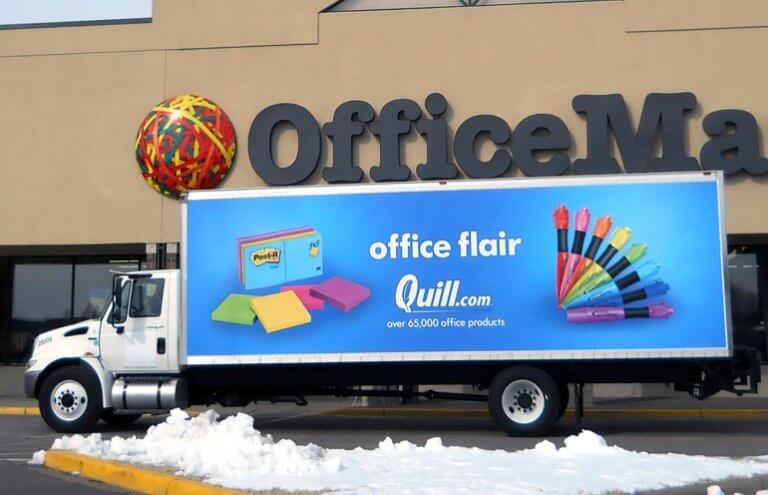
A company’s brand name and logo are valuable assets. Every transportation business wants to ensure that its branding is visible on the transportation signs and signage installed by the agency. That’s if you’ve decided to run mobile advertising campaigns as a part of your transportation business’s marketing initiative. Your interactions require proper displaying and successful mobile advertising campaigns that generate more inquiries and bookings—at the same time, keeping the company out of hot water with regulatory bodies.
With so many different types of digital signage, such as mobile advertising and digital bus benches, available to transportation businesses today, it can be challenging to ensure you’re displaying your brand name and logo most effectively. To understand which type provides the best value for your campaign, you’ll need to know about all the different types of digital signage that are actually on the market. The following gives a brief overview of what you need to know and some tips and tricks for ensuring your campaign is as successful as possible.
Transportation Advertising Business Overview
Transportation advertising is a marketing technique used by businesses to get maximum exposure for their services. The purpose of transportation advertising campaigns is to attract more clients, which means that designers need to design the signs so that they can be easily seen and understood, so people recognize them. You want potential customers to think of your business whenever they are looking for transportation solutions, whether taxi hire or public means.
The key to maximizing your exposure in your location is to ensure your branding is on display whenever people in your vicinity need transportation services. This technology has many applications in the transportation world. So, if you want to stand out from your competition when potential customers are searching for transportation solutions, truck and bus advertising is the way to do it.
If in Fort Collins, CO, your goal is to get people to think of you when they need transportation services. The best thing about using transportation mode for your advertising is no downtime. Especially when you can get services of towing in Fort Collins to tow your advertisement vehicles around. Hence, your business is always in the minds of potential clients. The primary objective of transportation businesses is to make sure your brand name and logo are displayed on the mobile signage that’s on display at all times. If you choose not to do this, it won’t be easy to ensure that your branding gets maximum exposure.
Best Practices For Ensuring Your Campaign Is Successful
Advertising on public transportation is an excellent way to reach potential customers already engaged with your business. This means it’s a great jumpstart for any marketing campaign. Here are best practices for ensuring your campaign is successful.
1. Ensure Proper Messaging on Transportation Signage
Ensuring that advertising on transportation signage achieves the goal of its advertisements is paramount. The message must be brief and easily understood, and consistent with other marketing materials such as print ads or website copy. Statements might include a call-to-action or link directly to a microsite where people can find more information about the advertiser’s products or services. Advertisements must also comply with all legal requirements, including those governing what can be shown in public transportation facilities.
2. Ensure That Advertising Follows TransLink Policies
Transportation businesses must ensure that their advertisements are compliant with Vancouver’s transit authority TransLink’s guidelines for signage on buses and at stations. TransLink’s website also includes several design templates to assist advertisers in creating custom signs and posters. Signage on bus exteriors is allowed only on the front of buses. At the same time, interior space is reserved for seating and other essential equipment such as air conditioning units or fare boxes. Other restrictions include those prohibiting offensive material or messages promoting gambling or illegal activity, as well as those governing proper lighting and lightning.
3. Be Aware of Local Laws
Always check local laws before launching any advertising campaigns. Some jurisdictions have stricter regulations than others. This means that you may need to adjust your advertisements or seek additional permissions when marketing in certain areas. In most jurisdictions, face-to-face communication is prohibited inside the paid areas of transit stations and stops. Still, marketers may display signage at a distance from fare gates as long as they do not threaten public safety. Also, certain cities, for example, prohibit advertising that promotes tobacco products. While other laws restrict the kind of content shown in public spaces.
4. Be Aware of Lease Terms
Advertising on public transportation can be an excellent way to reach potential customers, but it’s essential to understand the context before committing. If you are thinking about launching a campaign in any State, you want to ensure that your advertisements comply with lease terms for available space on vehicles and stations. For example, they may prohibit certain kinds of content or specific slogans. To avoid disputes with leasing partners, you should always read the terms in their entirety and seek legal assistance when necessary.
5. Use Your Imagination
Part of what makes advertising on transportation such a compelling proposition is that advertisers can show up in places where they wouldn’t be able to reach people otherwise. This is an excellent opportunity for marketers who want to take advantage of the spontaneity of unusual advertising locations. This means that you can embrace your creativity and devise interesting ideas for reaching potential customers proactively. There are many stories about how businesses have successfully used creative marketing techniques to promote their services on public vehicles worldwide. A few brands that come to mind include Airbnb, which once ran an ad featuring creepy dolls on San Francisco buses, and Audi, who paid for an emergency call box installed at the top of Mount Washington in Pittsburgh. And these are just two examples among many.
6. Ensure That Campaigns are Not Overbearing
Advertisements should reflect the style and image of any business or organization that wants to use them. This means that campaigns should adhere to laws governing public spaces and fit within the context of the local environment. But first and foremost, make sure that your advertisements don’t inadvertently distract drivers and pedestrians or obstruct visibility. It’s also a good idea to include safety messages in all of your signage since potential customers might not be familiar with the risks associated with advertising on buses and trains. For example, TransLink has guidelines for displaying safety signs inside their vehicles.
7. Be Careful With Transportation Vouchers
Advertising transportation vouchers such as train passes or bus tickets are common practice among businesses worldwide, but it can pose unforeseen problems if you’re not careful. For example, one US-based retailer once marketed its products using coupons redeemable for BART public transit tickets without realizing they could only offer discounts on fares, NOT passes. This meant that their coupons had no value, which didn’t go over well with customers at all. They were forced to pull the campaign and issue refunds, as you can imagine.
Additionally, be wary of tactics that could confuse your potential customers. For example, one US-based retailer called Dapper Classics once advertised sales on tickets to visit internationally recognized landmarks like the Colosseum in Rome and Machu Picchu in Peru. While this was undoubtedly creative marketing, it also created logistical problems for travelers who mistook local city buses or subways for “public transportation” services.
8. Offer Options
If you’re looking at advertising on public transportation, you should remember that different people travel in different ways and with additional needs. Businesses should consider this when choosing a promotional strategy since it’s impossible to reach everyone using the same ad. For example, research conducted by Brazilian agency MHC Verlag revealed that ads inside Sao Paulo metro cars were more effective than billboards at getting commuters to listen to an audio ad for a clothing store.
But only 3% of their participants said they remembered where to find the store after seeing the metro ads, while 5% took note of the billboard information and 11% later found the store online. So if your goal is to get potential customers into your shop, billboards may be better than subway ads. On the other hand, subway ads might be more effective if your goal is to generate brand awareness or encourage people to visit your website.
9. Review Campaign Results
Last but not least, transportation businesses must always carefully review the performance of their campaigns to ensure they are reaching intended audiences, meeting advertising goals, and complying with local laws. This process may require a mix of statistical analysis and consumer surveys, as well as face-to-face interviews if necessary. When analyzing marketing efforts, companies should consider each element separately for best results: types of advertising space used and impressions generated by each; placement location and audience demographics; content and context; frequency of exposure; social media referrals; return on investment (ROI) calculations that include costs associated with campaign preparation, budget, staff time and other resources.
Transportation businesses are constantly evolving along with the world around them. As cities grow, change, and adapt to new technologies, bus stops hang ads for sneakers instead of train tickets. Subways broadcast advertisements on plasma screens embedded in station walls. Billboards become touch screens that can be used to order coffee. But only by investing in good planning, thorough research, creative solutions, and sound record-keeping can these innovative companies successfully promote their brands while staying within the law.


